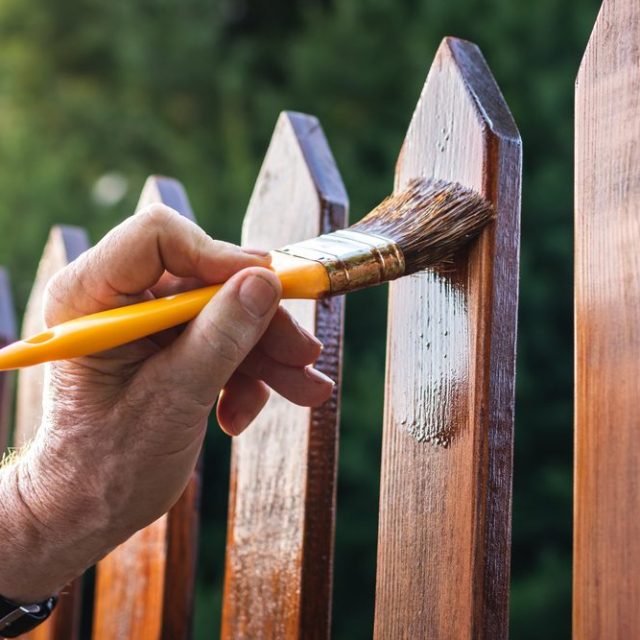
Maintaining Your Fence After Restoration to Keep It Looking New
A fence does more than define property lines, it enhances curb appeal, adds security, and contributes to the overall beauty of your outdoor space. If you’ve recently restored your fence, you’ve already made a smart investment in preserving your property’s appearance and value. But restoration is only the first step. To keep your fence looking fresh and sturdy for years to come, ongoing maintenance is essential.
Why Fence Maintenance Matters
After investing time and money in fence restoration, you’ll want to protect that effort. Without regular care, your fence is exposed to constant threats, including:
- Weather damage from rain, wind, and UV rays
- Moisture-related issues like mold, mildew, and wood rot
- Rust and corrosion on metal fences
- Wear and tear from pets, kids, and landscaping equipment
Proper maintenance extends the life of your fence, reduces repair costs, and ensures it continues to complement your property’s appearance.
Routine Cleaning: The First Line of Defense
One of the simplest yet most effective ways to maintain your fence is regular cleaning. Dirt, pollen, algae, and mildew can build up over time, dulling the finish and weakening the material.
- Wood Fences: Use a gentle wood cleaner or a mixture of water and mild detergent. A soft brush works well to scrub away grime without damaging the surface.
- Vinyl Fences: A hose and sponge with soapy water usually do the trick. For stubborn spots, vinegar or a non-abrasive cleaner helps.
- Metal Fences: Wipe down with water and mild soap. For rust-prone areas, consider a rust-inhibiting cleaner.
Plan to wash your fence at least twice a year, or more often if it’s exposed to heavy moisture, salty air, or shaded areas that encourage mildew growth.
Protecting Wood Fences
If your fence is made of wood, it needs extra care to withstand the elements. Wood is naturally vulnerable to moisture, pests, and UV rays, but proper treatment makes a big difference.
- Reapply Sealant or Stain: After restoration, most wood fences are stained or sealed. These protective coatings don’t last forever. Reapply every 2–3 years to keep the wood resistant to water, sun, and insects.
- Inspect for Rot: Check the base of posts and pickets for soft spots. Addressing small patches of rot early prevents major repairs later.
- Control Landscaping: Keep plants, vines, and sprinklers away from direct contact with your fence. Moisture from plants and water systems accelerates decay.
Caring for Metal Fences
Metal fences, such as wrought iron, steel, or aluminum, are sturdy but prone to corrosion if not maintained properly.
- Prevent Rust: Inspect for rust spots, especially at joints or areas where paint has chipped. Light rust can be sanded and covered with a rust-resistant primer and paint.
- Repaint as Needed: A fresh coat of paint every few years helps prevent corrosion and keeps your fence looking polished.
- Lubricate Hinges and Latches: For gates, apply lubricant to moving parts to keep them functional and prevent squeaking or sticking.
Maintaining Vinyl Fences
Vinyl fences are relatively low-maintenance, but they still need attention to stay bright and strong.
- Avoid Harsh Cleaners: Stick with mild soap or specialized vinyl cleaners to prevent surface damage.
- Check for Cracks: Temperature fluctuations can sometimes cause cracking. Small cracks should be sealed before they spread.
- Prevent Discoloration: Rinse off fertilizers, grass clippings, and other debris quickly to avoid staining.
Seasonal Fence Maintenance Checklist
To simplify your upkeep routine, here’s a seasonal approach to fence maintenance:
- Spring: Inspect for winter damage, clean thoroughly, and reapply sealant or paint if needed. Trim back any vegetation.
- Summer: Watch for UV damage on wood fences. Perform spot-treatments for mold, mildew, or rust.
- Fall: Clear away fallen leaves and debris that trap moisture against the fence. Prepare for wet weather with a protective coating if it’s time for reapplication.
- Winter: Ensure proper drainage around fence posts to prevent water pooling and freezing. For metal fences, check for frost-related cracks in the paint.
Quick Repairs Go a Long Way
One of the best ways to extend your fence’s lifespan is by addressing small problems before they escalate.
- Loose boards or pickets should be re-secured immediately.
- Warped or cracked boards can be replaced without disturbing the rest of the structure.
- Rust spots should be treated at the first sign of discoloration.
By making quick fixes part of your routine, you’ll avoid larger, more expensive restoration projects down the road.
Professional Maintenance Services
While many homeowners can handle basic fence upkeep, sometimes it’s worth hiring a professional. Experts have the right tools, materials, and experience to spot hidden damage and apply treatments correctly. If you’re short on time or want the peace of mind that comes with professional care, scheduling annual fence maintenance can keep your structure in top condition.
Keep Your Fence Looking New for Years
Fence restoration breathes new life into your outdoor space, but the real secret to longevity is consistent maintenance. By cleaning regularly, reapplying protective coatings, and handling small repairs right away, you can ensure your fence remains a strong, attractive feature on your property.
Whether your fence is wood, metal, or vinyl, taking a little time each season to care for it will save you money in the long run and keep your yard looking its best. With the right approach, your restored fence will continue to look new and perform beautifully for many years to come.
